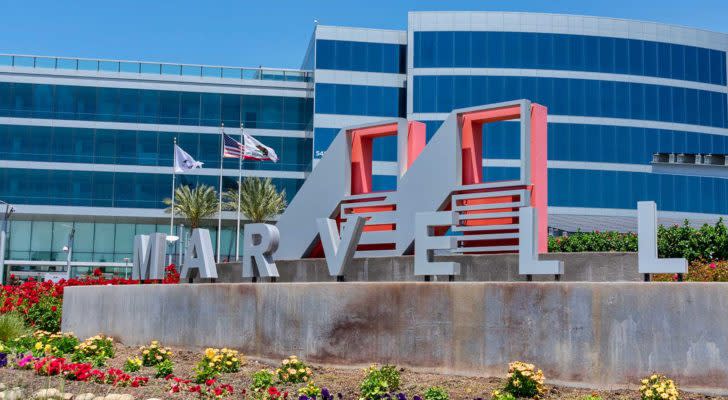7 Battered Growth Stocks to Avoid Even at a Discount

Source: bacho / Shutterstock.com
Equity market headwinds may dent flows into equities in the following quarters. Rising interest rates and ramping inflation should continue to weigh on world economic growth and bring additional downside on growth stocks.
Since the beginning of the year, equity markets measured by the SPDR S&P 500 Trust ETF (NYSEARCA:SPY) dipped 13% to $415. In the meantime, the Invesco QQQ Trust (NASDAQ:QQQ), one of the largest ETFs tracking the performance of growth stocks, underperformed the equity market tumbling 23% to $309.63 per share.
Interest in growth stocks waned following sluggish growth expectations and poor financials. Indeed, most of these growth stocks are still struggling to turn a profit.
InvestorPlace - Stock Market News, Stock Advice & Trading Tips
Besides, some of these stocks are overleveraged and trade at relatively elevated valuation metrics, indicating that additional downside might be just around the corner.
In this context, here is a list of battered growth stocks to avoid even at a discount:
Beyond Meat | $28.63 | |
Fisker | $10.75 | |
AMC Entertainment | $14.43 | |
Teladoc | $35.77 | |
Fastly | $13.18 | |
Snap | $15.58 | |
Marvell Technology | $60.82 |
Beyond Meat (BYND)

Source: Sundry Photography / Shutterstock.com
Beyond Meat (NASDAQ:BYND), the plant-based food leader has suffered in the past few months, as interest in meat alternatives seems to slow down. BYND stock lost more than 55% since the beginning of the year.
In Q1 2022, Beyond Meat missed analysts’ revenue and earnings per share guidance, giving shorts an additional reason to sell the stock. Despite that, BYND’s top line grew at a steady pace of 14.2% to $465 million in 2021 and is expected to expand 22.58% to $569 million this year.
Nevertheless, BYND remains profitless and its net loss is projected to deepen. Estimates expect losses will reach $281 million in 2022, amid increased trade discounts, list price reduction in the EU and changes in sales mix among other headwinds.
With this weak bottom line, BYND’s price could continue to fall. It’s trading at a forward EV/Revenue of only 4.41x. Moreover, net debt is expected to advance by a whopping 83.4% to $778 millionthis year. That’s a bearish sign for its long-term development.
Fisker (FSR)

Source: T. Schneider / Shutterstock.com
Fisker (NYSE:FSR) is an early-stage company engaged in designing and developing electric vehicles (EV). FSR stock decreased more than 35% year to date. Unfavorable conditions in the EV market could continue to drag FSR down.
Fisker’s ambitions are to target an annual volume of approximately 200,000 vehicles by full-year 2025. The consensus of analysts has a constructive view on the EV’s top line, anticipating a strong net sales growth this year, up to $592 million from only $11 million in 2021.
Concomitantly, FSR’s bottom line is projected to reach a negative $501 million.
Until the company reached these goals, FSR needs cash to fuel this growth. FSR’s net debt is expected to expand robustly in the next two years, reaching $246 million in 2022 and advancing 227.7% to $806 million in 2023.
However, Fisker has one of the highest valuations on our growth stocks list, exchanging at 2022e EV/Revenue of 58.4x and offering a forward P/E ratio of -6.6x. In this context, EV carmakers should adopt a watch and see stance in this unfavorable equity market, waiting for further developments from the firm.
AMC Entertainment (AMC)

Source: Helen89 / Shutterstock.com
AMC Entertainment (NYSE:AMC) is one of the world’s largest movie exhibitions, with over 950 theatres and 10,500 screens across the globe.
AMC stock got battered by the market a year, dropping more than 45% year to date. This poor stock performance should not take investors by surprise, given the weak financials of the theater specialist.
After expanding robustly in 2021, up 103.5% to $2.52 billion, revenues are expected to advance by another 77.29% this year to $4.48 billion. While this hefty top-line growth will cut AMC’s yearly loss in half to $569 million, it will not suffice to curb the bearish stock pressure.
More worryingly, analysts expect AMC’s net debt to advance 23.8% to $4.83 billion, putting the company in a difficult position, given that it is expected to reach a leverage ratio of 13.3x.
Furthermore, AMC stock trades at a high multiple of 29.7x in terms of 2022e EV/EBITDA but is more affordable as regards forward EV/Revenues, trading at only 2.41x. Nevertheless, analysts are bearish on the theatre stock, offering an average target price of $7.67 per share.
Teladoc Health (TDOC)

Source: Postmodern Studio / Shutterstock.com
Teladoc Health (NYSE:TDOC) is a global leader in whole-person virtual care, providing virtual healthcare services and aiming to improve health for all.
While it topped $293 in February 2021, TDOC stock has lost more than 62% of its market capitalization since the beginning of the year. Teladoc revised 2022 estimates, and its Q1 2022 bottom-line miss has not helped.
The stock has largely benefitted from the pandemic, due to increased investor awareness of the healthcare sector. With this interest declining and following a non-cash goodwill impairment charge of $6.6 billion announced in Q1 2022 TDOC, the healthcare stock is poised for additional bearishness.
Going forward, revenues are projected to advance at a moderate pace relative to other growth stocks. Net sales are expected to expand 19.6% to $2.43 billion this year and 20.9% to $2.94 billion in 2023.
Despite that, TDOC’s profitability took a hard hit, which will take several years to sort out. Moreover, Teladoc’s net debt is expected to advance significantly this year, up 66.2% to $585 million, representing a fairly high leverage ratio of 2.36x.
Fastly (FSLY)

Source: Pavel Kapysh / Shutterstock.com
Fastly (NYSE:FSLY) is a cloud computing company, providing services in the areas of delivery, security, streaming media, e-commerce and private real-time content delivery network (CDN). FSLY stock got punished by the market, giving back 63% year to date.
FSLY is however expected to grow sales at a reasonable clip compared to other cloud computing growth stocks.
Analyst consensus expects net sales to expand 16.6% to $413 million in 2022 and 15.73% to $478 million. Nevertheless, Fastly is operating in a highly competitive market, and operating margins of the unprofitable tech company are projected to further deteriorate from -15.6% in 2021 to -16.6% this year.
With that being said, investors should avoid this growth stock for the moment and wait for a better price before jumping in, even if the stock trades at an undervalued price of only 3.96x forward EV/Revenue.
Snap (SNAP)

Source: dennizn / Shutterstock.com
Snap (NYSE:SNAP) is a tech company helping people communicate visually with friends and family through short videos and images called Snaps.
SNAP stock tumbled 66% year to date after it issued Q2 2022 profit warning earlier this week. The notice came on the back of a rapidly slowing economy that should hurt its digital advertising business.
With this announcement, investors dumped SNAP stock, despite the high future growth prospects. Analysts are forecasting a top-line growth of 27.7% to $5.25 billion this year and 37.7% to $7.23 billion in 2023. Yet, profit loss is estimated to deteriorate this year, establishing at -$896 million, compared to -$488 million in 2021.
Furthermore, SNAP stock remains overvalued compared to other tech growth stocks, even if it lost more than 70% of its market capitalization since the beginning of the year. The stock exchanges at 2022e EV/EBITDA of 60.9x and a forward P/B ratio of 8.49x.
Marvell Technologies (MRVL)

Source: Michael Vi / Shutterstock.com
Marvell Technologies (NASDAQ:MRVL) is a semiconductor company. MRVL stock dipped 32% since the beginning of the year, even if it beat earnings-per-share estimates in the last three quarters.
The semiconductor company remains out of investors’ favor, amid concerns that the economic cycle could turn negative. Marvell is estimated to grow net sales robustly this year, up 50.3% to $4.46 billion and 36.5% to $6.1 billion in 2023.
Despite that, the bottom line of the semiconductor specialist is expected to deteriorate, posting a net loss of $421 million in 2022 compared to -$277 million last year. More importantly, MRVL’s net debt is projected to expand significantly this year, up 786% to $3.9 billion, making it a relatively leverage stock with a 2022e ratio of 2.27x.
Moreover, Marvell remains overvalued compared to other semiconductor growth stocks, exchanging at a forward EV/EBITDA of 19.1x and a massive 2022e P/E ratio of 158x. In this context, investors should avoid this battered growth stock and wait for a better price before jumping in.
On the date of publication, Cristian Docan did not have (either directly or indirectly) any positions in the securities mentioned in this article. The opinions expressed in this article are those of the writer, subject to the InvestorPlace.com Publishing Guidelines.
More From InvestorPlace
It doesn’t matter if you have $500 in savings or $5 million. Do this now.
Early Bitcoin Millionaire Reveals His Next Big Crypto Trade “On Air”
The post 7 Battered Growth Stocks to Avoid Even at a Discount appeared first on InvestorPlace.

 generic
generic